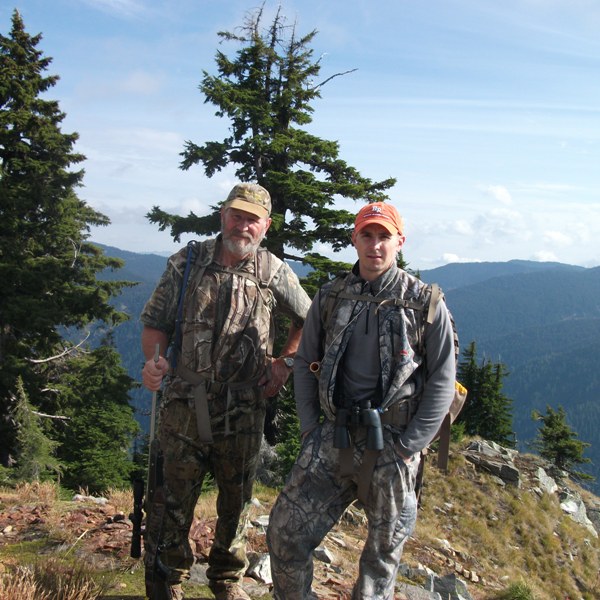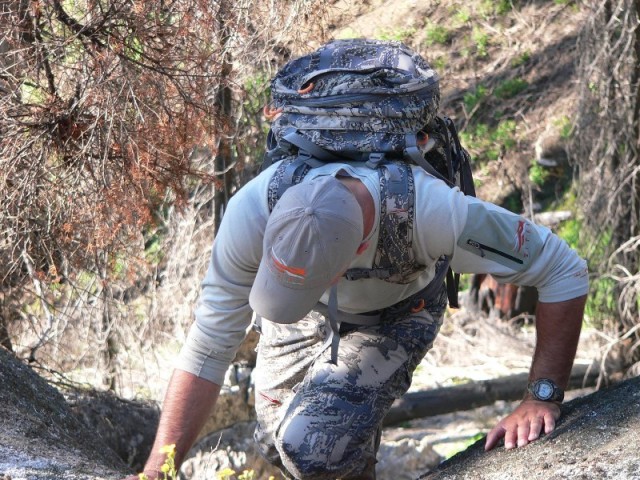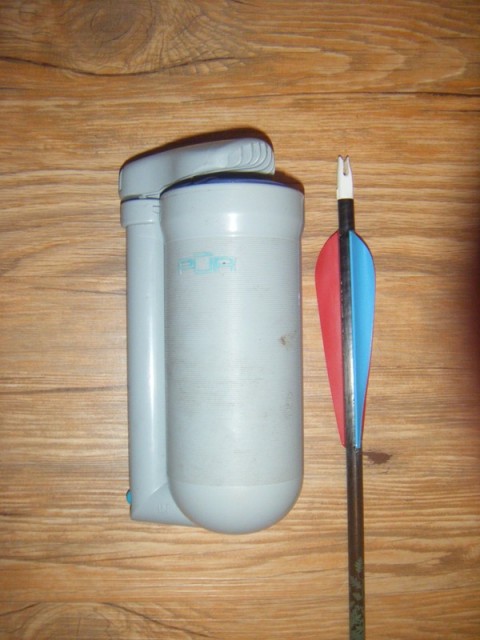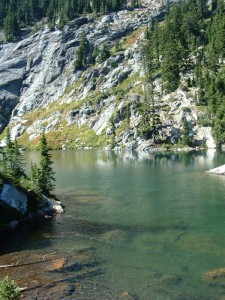DIY Gear – Top 3
 As a bivy style hunter I spend several nights on the mountain every year. Hunting this style takes lots of patience and a drive to go farther and deeper than any other willing person. Over the years I have found 3 items that have made life on the mountain and going the extra mile possible. These are the 3 items that make me a bivy style hunter. Without them I would not be in the places I consistently find elk. It is simply too far and too difficult if you do not have the right tools. If you are not a bivy style hunter this list would be much different, but if you are thinking about getting into it here are 3 items you cannot live without.
As a bivy style hunter I spend several nights on the mountain every year. Hunting this style takes lots of patience and a drive to go farther and deeper than any other willing person. Over the years I have found 3 items that have made life on the mountain and going the extra mile possible. These are the 3 items that make me a bivy style hunter. Without them I would not be in the places I consistently find elk. It is simply too far and too difficult if you do not have the right tools. If you are not a bivy style hunter this list would be much different, but if you are thinking about getting into it here are 3 items you cannot live without.
A back pack that fits
This is my number one item. Most people just purchase a backpack, throw it on, and wear it. I did this for the longest time and thought sore shoulders and sliding straps were necessary evils of my style of hunting. The truth is shoulder and back fatigue can stop your hunt short of expectations. Getting way back is all about being as comfortable as possible. I had a very capable pack that could have been comfortable while carrying weight, I just did not have it adjusted properly.
 Most new backpacks have an adjustable shoulder harness that can be moved up and down the backpack to fit anyone. You want the backpack to rest on your hips yet hug the rest of your body comfortably. Before purchasing a new pack make sure that they have the capability to adjust for different torso lengths. This will insure you can get a custom fit. Before wearing, adjust the torso to fit. Have someone help you measure your torso length with a cloth or flexible tape that will measure along the contours of you back. To measure torso length, measure from the point on your spine that is directly in line with the top of your hip bones to the vertebrae that protrudes from the base of your neck. Adjust your pack accordingly as all backpacks have a slightly different way to adjust. Once the torso length is adjusted, loosen all straps and put the pack on. Follow these steps to be sure your pack will be as comfortable as possible:
Most new backpacks have an adjustable shoulder harness that can be moved up and down the backpack to fit anyone. You want the backpack to rest on your hips yet hug the rest of your body comfortably. Before purchasing a new pack make sure that they have the capability to adjust for different torso lengths. This will insure you can get a custom fit. Before wearing, adjust the torso to fit. Have someone help you measure your torso length with a cloth or flexible tape that will measure along the contours of you back. To measure torso length, measure from the point on your spine that is directly in line with the top of your hip bones to the vertebrae that protrudes from the base of your neck. Adjust your pack accordingly as all backpacks have a slightly different way to adjust. Once the torso length is adjusted, loosen all straps and put the pack on. Follow these steps to be sure your pack will be as comfortable as possible:
- Tighten you hip belt to a very snug fit
- Tighten shoulder straps
- Tighten load lifter straps
- Tighten sternum strap
- Tighten load stabilizers
- Slightly release a little pressure on shoulder straps
- With some packs you can bend the removable aluminum stays for a complete custom fit
These steps and a well balanced load will decrease the fatigue of a heavy load and place the weight where it is most comfortable. There are several good backpacks out there specifically designed to handle whatever you are planning to hunt and pack. I have used the Eberlestock J34 and the Sitka Bivy 45. Both are excellent packs designed to exceed any hunters’ expectations.
Water Purifier
 A water purification system is a very important piece for survival and performance. Remember, a person can live several days without food, but a day without water would be unbearable if you are working hard. This is a must for the backcountry bivy type hunter.
A water purification system is a very important piece for survival and performance. Remember, a person can live several days without food, but a day without water would be unbearable if you are working hard. This is a must for the backcountry bivy type hunter.
Dehydration can do strange things to ones’ mind. Staying hydrated will also increase energy levels and performance allowing you to go the extra mile. There are several styles of water purification systems designed specifically for hikers. Pump style filters can range from $50 to $150 dollars and can usually filter hundreds of gallons of water with a single filter cartridge. Replacement filters often run from $30 to $60. I use a Pur Hiker (now Katadyn hiker) water filter and have had excellent luck with it. I have had it for 15 years now and it works like a charm. If you are looking for a less expensive option look into the filter straws or filter bottles. These are still very effective and are lighter in weight. Whatever model you choose, a water purifier is a very important part of surviving in the backcountry and I think most backpack style hunters would agree.
Packable Rain Gear
I am one who believes in layers, especially when hunting the backcountry. I like to go in light with a core shirt and a vest. Even on cold mornings this works well. I like to pack anything extra in my pack and be on the edge of being cold when I begin to hike first thing. I usually warm up very fast while not sweating too badly. One thing I always have in my pack is a light weight set of raingear. Usually the fall in the high country brings unsettled weather that can change in moments. You want to be comfortable and being wet is not comfortable. Staying dry means you will be able to stay comfortable and hunt for the duration.
 Raingear has come a long way from the heavy PVC raingear we all know too well. GORE-TEX has changed this game drastically. There is a lot of good quality, light weight, and quiet rain gear on the market these days. I like the downpour series from Sitka. It is relatively inexpensive, light weight, compact, and is very quiet for the archery hunters. It also has a snug fit and does not get in the way. Sitka Gear is also some of the most durable gear I have used.
Raingear has come a long way from the heavy PVC raingear we all know too well. GORE-TEX has changed this game drastically. There is a lot of good quality, light weight, and quiet rain gear on the market these days. I like the downpour series from Sitka. It is relatively inexpensive, light weight, compact, and is very quiet for the archery hunters. It also has a snug fit and does not get in the way. Sitka Gear is also some of the most durable gear I have used.
In rifle season where noise does not matter as much, I pack the Space Rain gear from Cabelas. It is very lightweight and takes up little space in any pack. It does fit a little loose and is a little noisy, so I would not recommend it for archery hunters.
If you are looking to try the backcountry, stay-on-the-hill, and go farther type of hunting you will need these three pieces of gear along with many other important items. One thing I have found is that there are many options of lightweight performance gear out there so do your homework, read reviews, and be sure to have some variation of these three items. Nobody said hunting is cheap, but believe me the best gear is worth every penny when it is crunch time. Be prepared and you will have a much more enjoyable experience!
